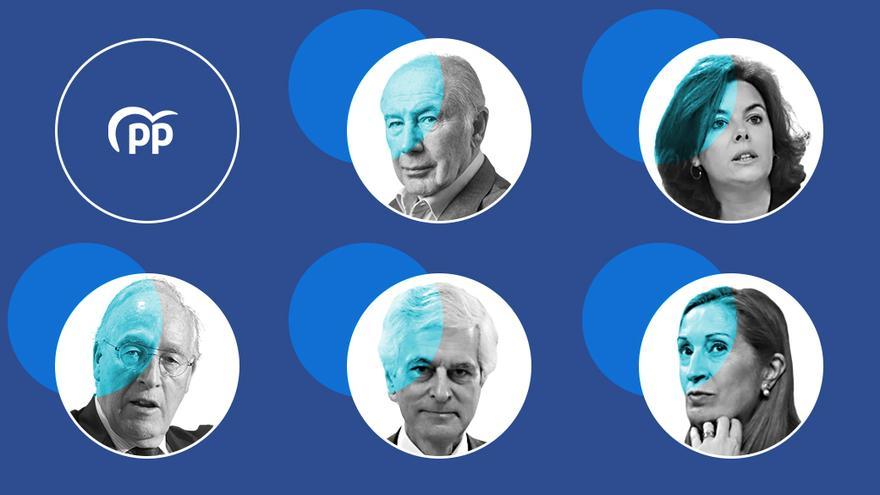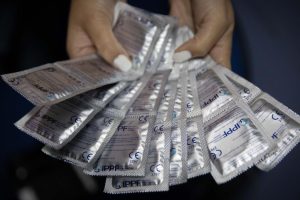The designation of his ‘number two’ usually gives headaches to every candidate for the Presidency of the Government. It serves as doors to the outside to see where the shots are going or to balance internally. Pedro Sánchez chose Meritxell Batet as a signal to Catalonia and, later, Margarita Robles as a star signing. In the case of United We Can, Pablo Iglesias opted for Carolina Bescansa in the first generals, but disagreements within the party led Irene Montero to that position in 2019. The PP has traditionally placed heavyweights in that position, linked to the economy , such as Rodrigo Rato or Manuel Pizarro, or with those who intended to emphasize their political message, such as the signing of Adolfo Suárez Illana.
Alberto Núñez Feijóo has now distanced himself from that line by incorporating Marta Rivera de la Cruz, a former Ciudadanos sponsored by Isabel Díaz Ayuso, of whom she was Minister of Culture, first at the proposal of Albert Rivera and, later, in the government in lonely. The maneuver aims, in principle, to ‘fish’ for voters who went to Ciudadanos and that they serve to balance names such as Cayetana Álvarez de Toledo, who drag him to the far right of the board.
The play is risky. The newspaper library haunts him. Rivera de la Cruz referred to Feijóo just four years ago as “caciquismo of the 21st century.” He complained that “teleFeijóo”, in reference to regional television, had left Ciudadanos out of the electoral space and accused the current leader of the PP of “going doped to the elections, erasing those who can scratch votes from the map.” In an electoral debate in 2015, he questioned the existence of sexist violence and called it a “cosmetic measure” that it had different penalties.
Feijóo’s choice surprised his own and others. Rivera de la Cruz was José Luis Martínez-Almeida’s ‘number two’ in the municipal elections on May 28 and, once he was invested with an absolute majority, he appointed her the capital’s culture delegate when his leader had already recalled her to The congress. “I did not expect it, it surprised me. I am not going to deny it. I think it is a decision that corresponds to Feijóo and it is a very good choice. Let’s wait and see what happens on July 23, let’s hope Feijóo wins them, and then it will be He is the one who is responsible for making decisions,” said the mayor at the press conference after the first meeting of the Governing Board. The role of Rivera de la Cruz is, therefore, still to be determined both in the electoral campaign and in her future after the elections.
Rivera de la Cruz lands, therefore, with a complicated baggage that clashes with that of the ‘number two’ that preceded her. But how did they age? Is the choice of tandem so important?
In the 1990s, José María Aznar thought so and that is why he chose Rodrigo Rato in 1993 and 1996. A career economist, he had had significant political weight as a spokesman in Congress and Aznar sent a message of solvency in what economic. In fact, in the electoral campaign in which he prevailed over the Socialists, he gave signs that he would create a “super-ministry of Economy and Finance” that he would leave in their hands. In the first elections, Felipe González had chosen the brand new judge Baltasar Garzón, who was later a government delegate in the National Plan on Drugs with the rank of Secretary of State and, once he returned to the judicial career, promoted the cause of the GAL .
Rato, acclaimed at that time for being supposedly the architect of the ‘Spanish economic miracle’ that later ended up in a bubble, repeated as Aznar’s tandem in 2000. In 2004, after having lost the succession fight with Mariano Rajoy, he remained in the position just before going to the International Monetary Fund (IMF). After his time abroad, he ended up in charge of the extinct Caja Madrid and Bankia, from where he resigned forced by the Government two days before the rescue.
Now he accumulates legal cases, such as the case of the ‘black’ cards of Caja Madrid that was uncovered by elDiario.es. After going through jail, he now rants about some of his former comrades.
Rajoy also opted for an economic profile in 2008 with Manuel Pizarro, who joined the PP coinciding with his incorporation into the candidacy. He had been an adviser to the Ministry of the Economy in Aznar’s time, but, above all, he had dedicated himself to private business as president of Endesa, which paid him 14 million just for the compensation for his dismissal.
Pizarro resigned as a director of Telefónica to accompany Rajoy, who left the weight of economic policy on him during the electoral campaign. The financial crisis was beginning and Pizarro faced the then Minister of Economy, Pedro Solbes, in a debate that he lost, according to the polls. But the electoral defeat changed the plans of the economist, who left his seat just over a year later. He has continued to be linked to the PP through FAES, but with a very low profile.
Rajoy did not count on Pizarro when he managed to reach Moncloa in 2011. In those elections he already incorporated Soraya Sáenz de Santamaría as an electoral ‘ticket’. She had been the parliamentary spokesperson and had acquired an important political profile in her ‘face to face’ with Alfredo Pérez Rubalcaba. She was the first woman to occupy that position on the PP list and she did it while pregnant. In fact, she gave birth in the middle of the campaign.
Sáenz de Santamaría maintained that position in 2015 (and in the electoral repetition of 2016) already as the all-powerful vice president of the Government and with an open confrontation with María Dolores de Cospedal. The loss of power through the motion of no confidence in 2018 exacerbated that clash and both disputed the leadership of the party together with Pablo Casado, who ended up assuming it thanks to the support of Cospedal, who lost the fight. Despite having obtained more votes from the militants, Sáenz de Santamaría was defeated and went to the private company with the Cuatrecasas law firm. Sánchez later placed it in the Council of State.
Casado opted for Adolfo Suárez Illana, son of the former Prime Minister, as a tandem at a time when he had two powerful rivals with Ciudadanos and Vox. The fact that he was a candidate in Castilla-La Mancha was a priori a good profile for that competition, since the figure of his father is of moderation but he had no problem defending the supposed contribution of the dictator Francisco Franco to democracy. The then leader of the opposition had entrusted him with the ideological convention of the PP.
The party leadership reserved a position for him on the Congress Table, from which he starred in some embarrassing moments such as turning his back on the EH Bildu spokesperson. But Suárez Illana, for whom Casado set up an ad hoc foundation, had not been his first choice, since he had tried it before with María San Gil.
And it is that Casado wanted, in reality, a moderate profile to accompany him. For this reason, in the electoral repetition of November 2019, he relegated Suárez Illana to third place and placed the former president of Congress and former minister Ana Pastor ahead. Again in the opposition, both held their respective positions on the Parliamentary Board, which represents a significant economic boost.
Suárez Illana left politics in 2022, while Pastor endures and Feijóo has ended up placing her as the head of the list for Pontevedra. The former minister, who was part of Casado’s leadership, was one of the many leaders who ended up betraying him in the internal fight that ended with his withering defeat and the anointing of the Galician.













